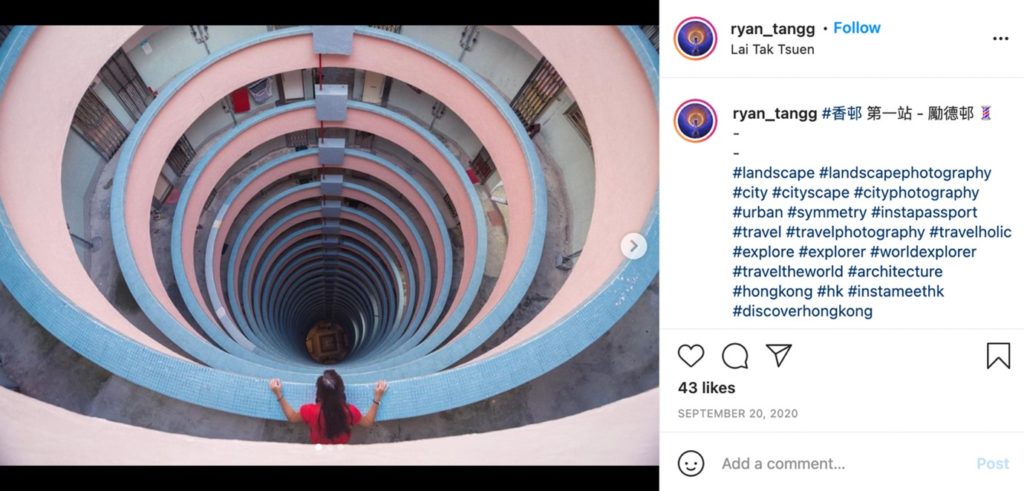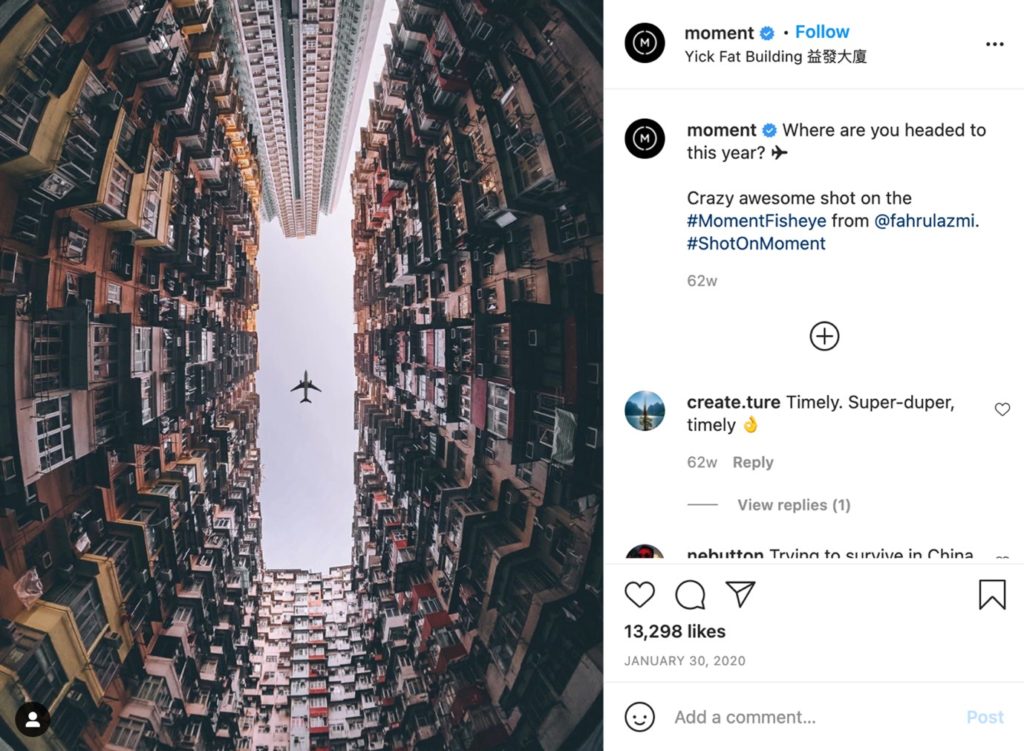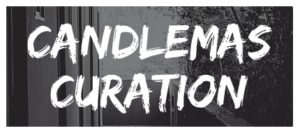Audrey Leung
From a young age, I frequently heard adults around me express this phrase about my home city of Hong Kong: “住不起”(zhu4bu4qi3), meaning: “can’t afford to live”. The city suffers a severe housing crisis, a result of the broken land tenure system the government has for long clung onto and refused to amend, all in the name of windfall land revenues.
Foreign and local photographers alike have often regarded Hong Kong as a “photographer’s paradise”. Densely packed, cookie-cutter, and grid-like public housing estates are certainly considered to contribute to this “aesthetic haven”. The media has featured many of these same few estates in listicles such as “20 Best Instagram and Photography Spots in Hong Kong”[1] and “Feed your camera with 7 of the best Instagrammable spots in Hong Kong”.[2] Instagrammers flock to these public housing estates daily, many hoping to get artistic shots in exchange for likes, followers, and an “aesthetic feed” on Instagram.
When planning this photo essay, I was ready to meander these housing estates myself, in an attempt to photograph them in a way that offered a critique to Instagrammers’ simultaneous glorification and exploitation of low-income homes and privacy. However, it quickly dawned over me that by virtue of me photographing these spaces close-up, I would too be participating in an objectifying invasion of privacy. The selection of photos that follow, therefore, are retrieved from Instagram, the Internet, and friends of mine who have visited themselves.
[1] 20 Best Instagram and Photography Spots in Hong Kong, Time Out. 2020. “https://www.timeout.com/hong-kong/things-to-do/best-places-to-instagram-in-hong-kong
[2] Feed your camera with 7 of the best Instagram spots in Hong Kong, Discover Hong Kong. https://www.discoverhongkong.com/in/explore/attractions/the-most-instagrammable-spots1.html
Choi Hung Estate

Yamini Jena. 2020.
Choi Hung, meaning rainbow in English, is a desired Instagram hotspot for its pastel colors. I edited this photograph monochromatically to decontextualize the estate outside of its “Instagrammable” rainbow colors. The residential building behind Choi Hung further serves to de-fetishize the estate and position it with other densely populated public housing estates, which in themselves present an elucidative example of the city’s steep housing crisis. Here, the black and white composition of Choi Hung showcases it as a constituent of the crisis, whereas normally, this representation might be obscured due to its “Instagrammable” rainbow aesthetic.
Instagram Hotspot

Facebook via Coconuts Media. 2018.
The purpose of this photo essay is not to deny meaningful photography or observation of low-income public housing estates for critical reflection on the housing crisis. However, this photo effectively represents the type of gaze and purpose that I wish to problematize.
The subjects in this photo can be seen to focus their gaze on their devices or the people they are doing their photoshoots with. The seeming “gazelessness” of some subjects also depict a lack of urgency during their visit and ignorance about their invasion, objectification, and commodification of these spaces and the residents’ privacy and everyday lives.
Troy Bolton Fan

The maintenance of a bright and colourful composition in this photo, or the potential alteration to achieve it, suggest a fetishization of the estate which reduce it to its appearance. What should be noted about fetishization of this estate, however, is that not all fetishizations of it have the same effect. The meanings depend on who the photograph’s subjects are, who they are taken by, and for whom.
The darker truth behind densely-packed public housing estates – revealing the government’s neglect of improving housing standards for low-income people – are obscured in this photograph through the “fantastical beauty” of colours. The designs and architecture of these public housing estates are meant to be beautiful (for residents), but in this instance, its beauty is potentially stolen by Instagrammers.
Distant Gaze

The subject gazes down in the middle of Lai Tak Tsuen estate, depicting a monarch-of-all-I-survey dynamic over the space and residents. This dynamic serves to hide the reality that is the commodification of the space and its residents behind a veil of “discovery” of this photographic landscape, in the name of being won for the subject.[3]. In comparison to the Choi Hung estate photos, this photo communicates a heightening of both hierarchy and invasion of privacy, because the subject has trespassed private property, photographed it from the inside, and included residents’ doors and belongings.
Both the subject’s gaze from above and the positionality of the camera portray a liminal duality of the power dynamic between the subject, the residents, and their homes. Precisely, one in which the subject feels a sense of ownership to be able to take the photo in the first place, but still remains a careful distance between them and the homes’ entryways as they are rendered distant objects, which by extension, the residents are rendered too.
[3] Pratt, Mary Louise. Chapter 9: From the Victoria Nyanza to the Sheraton Sal Salvador, in Imperial Eyes: Travel Writing and Transculturization. 1992. Routlege.
The Perfect Shot

The airplane captured in the aerial space between the buildings of Yick Fat estate suggest the photographer’s lack of regard for privacy and respect for the residents and their home. Capturing this “perfect shot” required potentially waiting for hours in the middle of this estate, for the exact moment an airplane flew over this specific location. Lurking and loitering are highly punishable and imprisonable offenses in Hong Kong; however, are these offenses renounced in low-income spaces? The photographer obscures the issue that is precisely an extreme lack of space and privacy faced by residents already as a result of public housing being so densely-packed, exploiting this tight space for this “perfect shot”.
Click Below to Return to the Curation Front Page:
